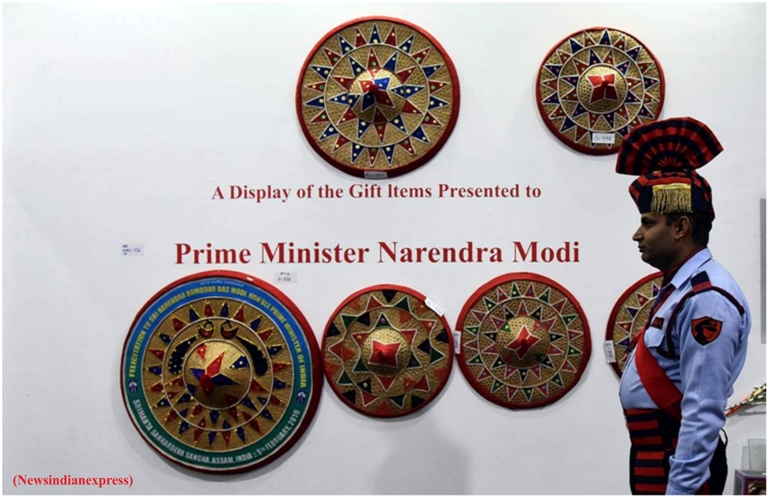‘Global Shield’ climate fund launched (GS Paper 3, Environment)

Why in news?
- Recently, at the 27th Conference of the Parties (COP 27), Group of Seven (G7) members announced an initiative to make funding available for low-income and vulnerable countries hit by climate disasters.
- The plan, dubbed ‘Global Shield’, is coordinated by G7 president Germany.
Aim:
- It aims to rapidly provide insurance and disaster protection funding in the event of floods, drought and other climate calamities in climate-vulnerable nations.
- Insurance is a key component of the plan but there is also a natural disaster clause that will “kick in to pause a country’s climate loans in certain circumstances”.
Developed by V20 group:
- It is being developed in collaboration with the Vulnerable Twenty (V20) group of 58 climate vulnerable economies.
- The research released by the V20 bloc in 2022 estimates countries had lost some $525 billion to climate impacts since 2000, reports Al Jazeera.
- This was the first time that a special loss and damage fund was on the agenda at the United Nation’s climate conference.
Who will pay for the fund?
- Germany has announced shelling out €170 million ($172 million) for the insurance plan.
- France will pay $20 million initially and its total commitment would be $60 million over three years.
- Canada and Denmark will stump up $7 million and $4.7 million respectively.
- United States has also expressed support for the plan.
Which nations would benefit from the funding?
- Pakistan, Bangladesh, Costa Rica, Ghana, Fiji, the Philippines and Senegal will initially benefit from Global Shield packages which would be developed in the coming months.
- The announcement has come after some countries witnessed catastrophic climate-related disasters in 2022 such as flooding in Pakistan that killed at least 1,700 people and affected more than 33 million.
NCW launches Digital Shakti 4.0 focussing on women
(GS Paper 2, Governance)
Why in news?
- Recently, the National Commission for Women (NCW) launched the fourth phase of Digital Shakti Campaign, a pan-India project on digitally empowering and skilling women and girls in the cyberspace.
- NCW launched it in collaboration with CyberPeace Foundation and Meta.
Focus:
- Digital Shakti 4.0 is focused on making women digitally skilled and aware to stand up against any illegal/inappropriate activity online.

Significance:
- Digital Shakti has been accelerating the digital participation of women and girls by training them to use technology to their advantage and to keep themselves safe online.
- The launch was followed by an interactive panel discussion on “Safe Spaces Online Combatting Cyber-enabled Human Trafficking & Combatting Other forms of Online Violence”.
About Digital Shakti:
Ancient art forms gifted by PM at the G20 summit
(GS Paper 1, Culture)
Why in news?
- At the G20 summit, Indian Prime Minister gifted traditional artworks from Gujarat and Himachal Pradesh to world leaders.
Details:
He presented:
- US President a Kangra miniature paintings;
- UK PM ‘Mata Ni Pachedi’, a handmade Gujarat textile offered in temples;
- Australian PM ‘Pithora’, a tribal folk art from Chhota Udaipur,
- agate bowls from Kutch to the leaders of France, Germany and Singapore; and
- a ‘Patan Patola’ scarf to his Italian PM Giorgia Meloni.

Kangra miniature paintings:
Mata Ni Pachedi:
- The craft is a handmade textile of Ahmedabad, Gujarat meant to be an offering in temples that house the Mother Goddess.
- Mata Ni Pachedi was crafted by the nomadic community of Waghris as homage to various incarnations of the Goddess.
Phithora:
- Phithora is a ritualistic tribal folk art by the Rathwa artisans from Chhota Udaipur in Gujarat.
- Phithora is a living testament of an ever-changing ethos exemplifying highly enriched folk and tribal art culture of Gujarat.
- These paintings are depictions of the cave paintings that tribals used to make reflecting the social, cultural and mythological life and beliefs of those tribals.
- The paintings bear a striking resemblance to the aboriginal dot paintings from the indigenous communities of Australia, a reason why the PM selected the gift for Australia.
Agate Bowls from Kutch:
- The semi-precious stone formed of chalcedonic-silica, typical to Gujarat, is found in the underground mines of Rajpipla and Ratanpur in riverbeds, and extracted to produce a variety of ornamental objects.
- This precious craft has been passed down generations of artisans since the Indus Valley civilisation and is currently practised by artisans of Khambat.
Patan Patola:
- The ancient art of double ikat or Patola woven in pure silk dates back to the 11th century.
- The scarf woven by the Salvi family in Patan area of Northern Gujarat is so well crafted that its front and reverse are indistinguishable.
This peculiar quality has its origins in an intricate and difficult technique of dyeing or knot dyeing, known as ‘bandhani’, on the warp and weft separately before weaving.




